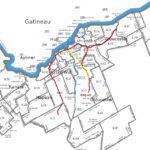Foot traffic plays a vital role in the hospitality industry, impacting everything from sales to customer experience. Understanding the seasonal trends that influence foot traffic, such as tourism patterns and demographic shifts, can help businesses optimize their marketing strategies. This article examines the effects of factors such as weather, holidays, and local events on customer visits. Discover how to analyze foot traffic data, develop targeted promotions, including digital marketing and social media engagement, and implement best practices for managing busy seasons to ensure both operational efficiency and customer satisfaction.
Explanation of Foot Traffic and its Importance for Hospitality Marketing and Consumer Behavior

Foot traffic is a crucial metric in hospitality marketing, as it measures the number of potential customers who visit a specific location over a defined period of time. Understanding foot traffic patterns and how they are influenced by marketing efforts, including inbound marketing and localized marketing, can help inform marketing strategies, promotional campaigns, and operational effectiveness.
Factors such as seasonal trends, local events, demographic shifts, marketing initiatives, and advertising trends significantly drive foot traffic, making it essential for businesses to grasp these dynamics.
To leverage customer behavior data within the hospitality sector, businesses can analyze foot traffic patterns to enhance visitor engagement and optimize their marketing strategies. This approach can ultimately lead to increased hotel occupancy rates and revenue generation. Foot traffic analysis provides valuable insights into consumer demographics and preferences, extending beyond mere visitor counts and contributing to business intelligence and market research.
For instance, tracking visitor numbers by month or season can help establish marketing initiatives that align with consumer behavioral patterns, ensuring that these efforts are as effective as possible. If a business observes a spike in visitors during specific peak seasons, it would be wise to implement targeted marketing initiatives during those times.
Additionally, recognizing seasonal variations in demographics and conducting demographic analysis can aid in reaching specific customer groups. For example, restaurants in ski resorts may experience a different demographic profile and see an increase in visitors during the ski season compared to the summer months.
Analyzing foot traffic patterns, including traffic patterns and booking trends, can yield critical information that helps businesses develop or modify products and services to meet underlying demand. This data should play a key role in shaping a strategic plan for any hospitality business. By understanding their customers better, businesses can more effectively cater to their needs and improve customer experience.
Factors Affecting Seasonal Trends in Foot Traffic
Several factors influence seasonal trends in foot traffic, which are crucial for the hospitality industry’s strategic marketing, customer engagement, and operational planning efforts.
- Weather: Seasonal weather patterns significantly affect people’s willingness to go out, as warmer or cooler conditions can directly impact foot traffic and visitor statistics. This is particularly true for outdoor activities that rely on favorable weather.
- Local Events: Events such as music festivals, sporting competitions, and holidays can attract visitors and boost foot traffic, even during typically slow seasons for specific locations.
- Economic Factors: The overall state of the economy plays a vital role in consumer behavior and foot traffic. External economic factors such as inflation, recession, or political instability can lead to substantial changes in foot traffic. For instance, rising inflation may result in a decline in tourism as individuals opt to reduce travel expenditures, highlighting the economic impact on the hospitality industry.
Plus these primary factors, several other variables further influence seasonal trends and seasonality effects in foot traffic:
- Demographics: Different age groups, genders, ethnicities, and countries of origin exhibit varying preferences when it comes to travel and tourism. By carefully analyzing their target demographics, businesses can implement promotional campaigns that effectively attract the right audience during different seasons.
- Marketing and Promotions: Marketing initiatives and promotional efforts, such as discounts, loyalty programs, or package deals, can significantly impact foot traffic. Seasonal promotions and customer loyalty programs can enhance a business’s visibility and draw in customers during slower periods, improving customer retention.
In conclusion, understanding the factors that affect seasonal trends in foot traffic is essential for businesses in the hospitality industry. By analyzing these variables using data analytics and market analysis, companies can develop effective marketing strategies and promotional campaigns that optimize foot traffic throughout the year.
Weather, Holidays, and Local Events

Weather, holidays, and local events are crucial factors that significantly influence foot traffic patterns, customer behavior, and engagement in the hospitality industry. These elements collectively shape consumer insights and engagement metrics.
For instance, weather conditions can impact outdoor dining, tourism, and travel trends. Holidays often lead to family gatherings and celebrations, resulting in spikes in demand. Additionally, local events such as festivals, concerts, and community gatherings attract large crowds and serve as significant traffic drivers for hospitality businesses that cater to both local and regional audiences through effective event scheduling and event marketing.
Hospitality businesses that comprehend the effects of weather, holidays, and local events on foot traffic can develop tailored marketing strategies and seasonal promotions to draw in visitors. Analyzing historical weather patterns can help forecast busy periods, enabling the industry to prepare by ensuring appropriate staffing levels and inventory are available, thus enhancing operational efficiency and service quality.
The influence of holidays is particularly notable, as they inspire consumer behaviors that create specific trends and encourage the development of unique themed offerings that resonate with celebratory moods. Local events often serve as cornerstones for marketing campaigns, providing opportunities for hospitality businesses to promote their products or services to event-goers, leveraging social proof and online presence.
Overall, the “dynamic changes” brought about by seasonal shifts in weather, holidays, and local events can enhance sales conversion strategies and foster customer loyalty, as patrons seek out memorable experiences. This aligns with brand engagement and adaptive marketing practices.
Analyzing and Utilizing Seasonal Trends for Marketing Strategies
To capitalize on seasonal trends in foot traffic, businesses must conduct thorough data analysis and market dynamics review, and develop targeted marketing strategies that resonate with their audiences.
By examining historical data and traffic patterns, hospitality marketers can identify peak seasons and adjust their promotional campaigns accordingly, utilizing predictive modeling for accurate sales forecasting.
Gaining a comprehensive understanding of various customer segments and their behaviors during these times can enhance brand communication, geographic analysis, and improve marketing ROI.
Consumer insights and customer feedback should be incorporated into all aspects of marketing strategies, particularly during seasonal campaigns.
While seasonal promotions aim to excite customers and drive traffic, they must also consider customers’ motivations and preferences, ensuring alignment with the brand promise and effective brand positioning.
Effective seasonal marketing strategies not only help brands stand out during the holidays but also contribute to competitive differentiation, brand loyalty, and customer retention, enhancing overall brand awareness.
Collecting Data and Identifying Patterns

Collecting data and identifying patterns are essential for hospitality businesses that seek to optimize their marketing strategies and improve visitor engagement, as well as customer acquisition.
By leveraging these insights, businesses can significantly enhance their sales forecasting, allowing them to anticipate trends, such as seasonal fluctuations, and adjust inventory accordingly.
Integrating tools that track the customer journey and experience marketing enables organizations to gain a comprehensive view of how visitors interact with their services, from the initial contact to the final purchase.
This knowledge not only helps identify high-impact advertising strategies, including multichannel marketing and direct marketing, but also highlights potential areas for improvement in service delivery.
As a result, hospitality businesses can create more personalized experiences, ultimately driving customer loyalty programs and maximizing overall revenue.
Creating Targeted Promotions and Campaigns
Targeted promotions and campaigns are essential for hospitality businesses to increase foot traffic during specific seasons and events. By analyzing data, businesses can identify seasonal consumer preferences and seasonal behavior, which, when combined with customer segmentation techniques, lead to the development of effective advertising strategies.
These advertisements can be tailored to present promotional offers and seasonal offers that are likely to attract desired visitors at the most opportune times. Well-designed promotions and digital marketing campaigns can enhance brand positioning and raise brand awareness. Visitors seeking new experiences are more inclined to engage with such promotions, leading to increased sales. This is especially true during peak seasons, where well-timed promotions can foster brand loyalty and encourage repeat visits, helping a business become an integral part of the community.
Customer Segmentation and Market Segmentation are Critical to Targeted Promotions

Customer segmentation involves identifying and creating groups within the overall customer base. These groups can be defined by various factors such as demographics, purchase history, psychographics, and behavioral traits. This segmentation is crucial for effective market segmentation in the hospitality industry.
Each segment has distinct needs and motivations that can be leveraged to create tailored offers, driving business success in the hospitality industry. Implementing targeted promotions that align with specific customer segments enhances marketing effectiveness, contributing to positive market dynamics.
Analyzing metrics like engagement rates, customer feedback, visitor statistics, and conversion rates will help refine these efforts over time. Additionally, customer engagement can be boosted through local partnerships, localized marketing, or events that foster a sense of community and build loyalty.
Best Practices for Managing Foot Traffic during Peak Seasons
The importance of implementing best practices for managing foot traffic during peak seasons in the hospitality industry lies in enhancing operational efficiencies and increasing customer satisfaction.
As foot traffic tends to rise during holidays and major regional events, hospitality businesses must adequately prepare to accommodate the influx of visitors. The strategies outlined in this article, which include effective staffing, inventory management, and streamlined customer service processes, are essential for ensuring that the visitor experience remains positive.
By prioritizing customer experience during peak hours and busy days, businesses can foster improved brand loyalty and encourage repeat visits, ultimately contributing to the long-term success of any hospitality establishment. Incorporating hospitality marketing strategies and understanding shifts in tourism patterns can further aid this process.
Ensuring Efficient Operations and Customer Satisfaction
The importance of operational efficiency and customer satisfaction in hospitality businesses during peak seasons cannot be overstated. Effective staff management is crucial, as well-trained personnel can enhance customer experiences by reducing wait times and fostering visitor engagement.
It is essential to optimize service delivery processes to ensure smooth operations amidst increased foot traffic. Feedforward mechanisms, such as online reviews and customer surveys, play a vital role in tracking customer satisfaction and identifying areas for future improvement.
During periods of high demand, fostering a culture of continuous staff training is essential, enabling employees to effectively manage peak times. Additionally, experiential marketing strategies can be employed to create memorable interactions for guests, enhancing their overall experience and encouraging repeat business.
Actively soliciting customer feedback and responding to it fosters an environment where rapid changes can be implemented, ensuring that services align with customer needs and expectations. This approach not only facilitates operational flow during busy periods but also helps build long-term customer relationships. Using data analytics to monitor and improve service quality is also crucial.
Handling Unexpected Changes in Foot Traffic
The issue of unexpected changes in foot traffic refers to a sudden and unanticipated drop or increase in the number of patrons at a hospitality business. Various factors can contribute to this phenomenon, including sudden economic downturns, adverse weather events, or unforeseen local occurrences such as construction projects or festivals. Many hospitality businesses operate on tight margins, so any unexpected changes in foot traffic can significantly impact revenue generation.
To mitigate negative effects, managers can employ demand forecasting, demand planning, and real-time traffic analytics to make informed decisions. By closely monitoring market trends and analyzing their customer data, businesses can better anticipate changes in demand and adjust their operations accordingly. This may involve altering operating hours, staffing levels, or inventory to better align with customer needs.
Plus demand forecasting and analytics, marketing metrics and competitive analysis are vital for positioning a hospitality business and ensuring that it is adequately stocked to meet customer demands. Learning from the experiences of others and staying attuned to customer preferences enables businesses to adjust their offerings and marketing strategies in response to expected demand, ultimately attracting more customers and increasing revenues.
One effective way to predict traffic patterns is by utilizing heat maps and customer flow analysis. These tools provide managers with insights into peak and slower hours, helping them determine when to increase or decrease staff and inventory. For instance, Happy Hour specials can be modified based on traffic patterns to encourage foot traffic during slower periods.
Additionally, considering economic impact and demographic shifts can provide a broader understanding of how to manage operational planning more effectively.
Tracking and Adjusting for Unexpected Changes in Foot Traffic
Steps to track and adjust for changes in foot traffic include:
- Analyze Competitor Activity and Local Events: Stay informed about promotions or new product launches at nearby businesses, as well as local events such as rallies, concerts, or construction projects. Conducting competition analysis can provide insights into effective marketing strategies and help anticipate potential impacts on foot traffic.
- Utilize Customer Flow Analytics: Many restaurants, hotels, and bars implement systems to analyze customer flow and spending patterns. These systems help managers anticipate busy times and periods of lower activity. Data analytics and business intelligence tools are key to understanding these patterns.
- Adjust Advertising and Promotions Based on Foot Traffic Patterns: If traffic analytics indicate that a restaurant underperforms on Mondays, for example, Happy Hour promotions can be tailored to encourage visits during that time. This involves aligning digital marketing and social media engagement efforts to target the right audience.
- Monitor Staff and Inventory Levels: If a restaurant experiences increased traffic during Happy Hour on Mondays, management must ensure they have sufficient staff and inventory to meet the surge in demand. Effective sales forecasting and operational planning are crucial for this.
- Test Methods: Hospitality businesses can evaluate their traffic analytics methods by running advertisements or promotional campaigns on various websites or social media platforms to observe any increases in foot traffic. They can also implement loyalty or referral programs to assess their effectiveness in encouraging repeat visits. Moreover, leveraging target audience insights and demographic analysis can fine-tune marketing outreach.






